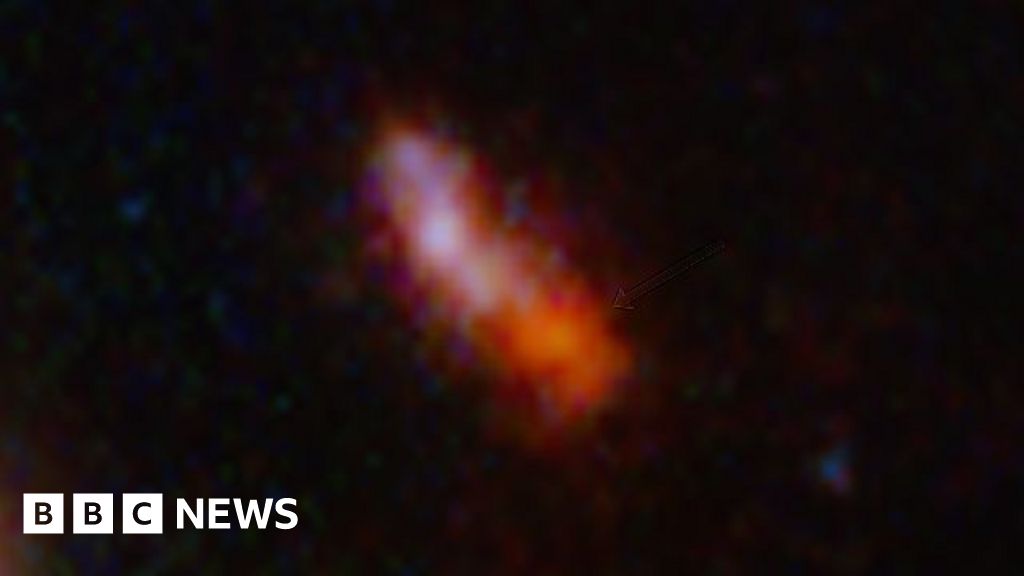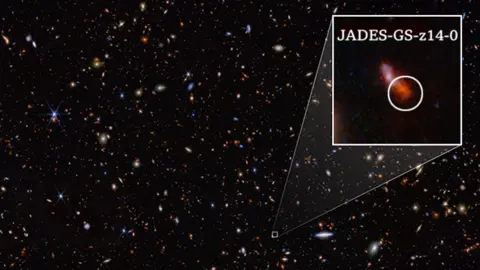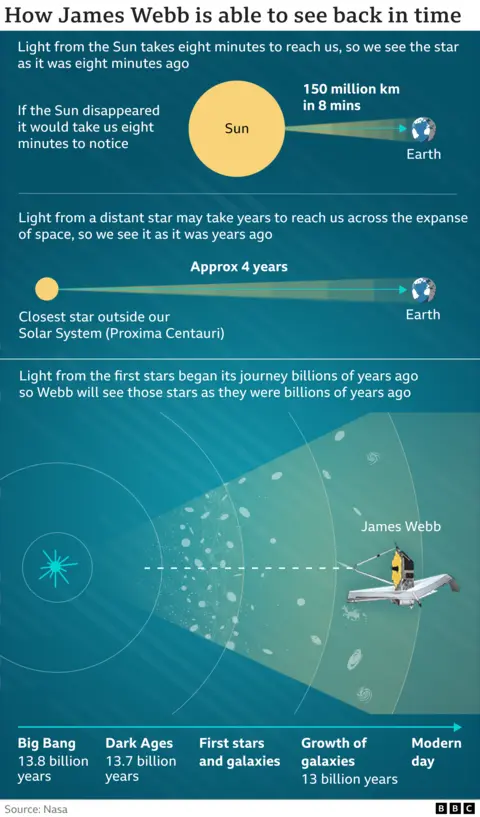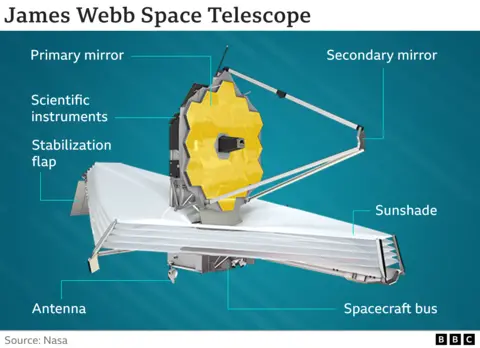
Earliest and most distant galaxy ever observed
- Science
- June 2, 2024
- No Comment
- 113
Jonathan Amos,Science correspondent, @BBCAmos
 NASA/ESA/CSA/STScI/Brant Robertson et al
NASA/ESA/CSA/STScI/Brant Robertson et alThe James Webb Space Telescope has smashed its own record for detecting the most distant known galaxy.
Called JADES-GS-z14-0, the collection of stars was spied as it was a mere 290 million years after the Big Bang.
Put another way – if the Universe is 13.8 billion years old, it means we’re observing the galaxy when the cosmos was only 2% of its current age.
Webb used its huge 6.5m-wide primary mirror and sensitive infrared instruments to make the discovery.
The telescope’s previous record holder was a galaxy seen at 325 million years after the Big Bang.
Astronomers say the most interesting aspect of the latest observation is not so much the great distance involved – as amazing as that is – but rather the size and brightness of JADES-GS-z14-0.
Webb measures the galaxy to be more than 1,600 light years across. Many of the most luminous galaxies generate the majority of their light via gas falling into a supermassive black hole. But the scale of JADES-GS-z14-0 indicates that is not the explanation in this case. Instead, the researchers believe the light is being produced by young stars.
“This much starlight implies that the galaxy is several hundreds of millions of times the mass of the Sun! This raises the question: how can nature make such a bright, massive, and large galaxy in less than 300 million years?” said Webb astronomers Stefano Carniani and Kevin Hainline.
Dr Carniani is affiliated to Scuola Normale Superiore in Pisa, Italy, and Dr Hainline is from the University of Arizona in Tucson, Arizona.

The $10bn James Webb Space Telescope (JWST) was launched in 2021 as a joint endeavour of the US, European and Canadian space agencies.
It was designed specifically to see farther across the cosmos – and further back in time – than any previous astronomical tool.
One of its key objectives was to find the very first stars to ignite in the nascent Universe.
These giant objects, perhaps many hundreds of times the mass of our Sun, were made only of hydrogen and helium.
They are theorised to have burnt brilliant but brief lives, forging in their nuclear cores the heavier chemical elements known in nature today.
In JADES-GS-z14-0, Webb can see a significant amount of oxygen, which tells researchers the galaxy is already quite mature.
“The presence of oxygen so early in the life of this galaxy is a surprise and suggests that multiple generations of very massive stars had already lived their lives before we observed the galaxy,” added Drs Carniani and Hainline.

The “JADES” in the object’s name stands for “JWST Advanced Deep Extragalactic Survey”. It is one of a number of observation programmes using the telescope to probe the first few hundred million years of the cosmos.
“z14” refers to “Redshift 14”. Redshift is the term astronomers use to describe distances.
It’s essentially a measure of how the light coming from a far-off galaxy has been stretched to longer wavelengths by the expansion of the Universe.
The greater the distance, the greater the stretching. The light from the earliest galaxies is stretched from ultraviolet and visible wavelengths into the infrared – the part of the electromagnetic spectrum to which James Webb’s mirrors and instruments were specifically tuned.
“We could have detected this galaxy even if it were 10 times fainter, which means that we could see other examples yet earlier in the Universe – probably into the first 200 million years,” said Prof Brant Robertson from the University of California at Santa Cruz.
The JADES discovery and its implications are described in a number of scholarly papers published on the arXiv preprint service.
#Earliest #distant #galaxy #observed









